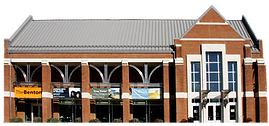
Encounters with the Collection: Wood is the first in a series of annual permanent collection gallery rotations that will bring fresh perspectives to the interpretation of the Benton’s holdings. This installation is a wide-ranging look at wood as a material in artmaking. The works of art were selected in collaboration with Chris Sancomb, Assistant Professor of Industrial Design in the Department of Art and Art History, School of Fine Arts.
The story of humanity has been defined by our relationship with stone, bronze, and iron. This concept, used to periodize human pre-history, has become conventional wisdom. Yet it overlooks the importance of another substance: wood. Wood has been used for thousands of years to fulfill basic human needs, such as fuel for cooking, material for building shelter, and for making tools and weapons. An organic material that comes from trees and other woody plants, wood is a renewable resource found across the globe. Beyond sustaining human survival, wood continues to have a boundless array of applications, both practical and aesthetic. Perhaps the reason it was excluded from the three-age system is that – especially here in New England – we have always lived in the Age of Wood.
Carpenters and craftspeople as well as artists have exploited different species of wood for their unique properties, including weight, density, color, grain, and even odor. Ursula von Rydingsvard favors cedar, which is easy to cut and shape but also quite durable, in part because it is naturally resistant to insects. Von Rydingsvard often rubs the surface of her sculptures with graphite. Other wooden sculptures have been painted, including a pair of Igbo masks carved in Nigeria by Oguocha Egoze. The lightweight masks embody ideals of feminine beauty and were intended for ritual masquerades, where performers dress in elaborate costumes to entertain both human and spirit audiences.
The relevance of wood to works on paper may be less obvious. For the most part, the drawings and prints featured in this gallery executed on paper made not from wood pulp but with cotton rag, the primary source material for paper until the late 18th century and one still used today in high-quality, archival papers preferred by artists. Prints such as Snake Man by Alison Saar are woodcuts, a subtractive process that starts by carving a block of wood. The resulting raised design is then inked and printed. While printmakers employ wooden blocks cut along the grain for woodcuts, wood engravings are made using wood’s end grain. Though the wooden blocks are more difficult to cut, wood engravings yield fine lines ideal for reproducing drawings.
Wood quite literally plays a supporting role in easel painting, whether as painted wood panels, stretcher bars for canvas, carved wooden frames, or the easels themselves. The dark brown frames on the paintings of Connecticut forests were carved from American chestnut likely salvaged from trees killed by the historic chestnut blight that started in 1910. The paintings show the work of the Civilian Conservation Corps in the 1930s, when efforts to breed blight-resistant chestnut trees began. These works serve as a reminder that wood may be a renewable resource, but it is one that must not be taken for granted.
